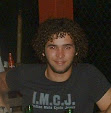This is a late translated and revisited version of a post from my first blog.
Doubt is a 2008 film adapted to the screen by John Patrick Shanley (a Pulitzer prize recipient) from a stage play called Doubt: A Parable. You can feel the theatrical nature of the film: well-centered in characters and not atmospheres, having lots of long scenes and plenty dialogues. The acting is impeccable, not only in the protagonist roles, assumed by Meryl Streep and Philip Seymour Hoffman, but also in the supporting ones. I remember I was at the edge of my seat watching the Oscar ceremony of 2008 when supporting actresses award was about to be announced. Viola Davis was a nominee... but she didn't win as she surely deserved due to a magnificent scene in the Doubt. But everything comes down to the script, which is brilliant in its economy of resources and its depurated narrative technique. Dialogues are paramount, of course. But the less trivial fact is that there is as much attention paid in what to say as in what not to say. This can be perfectly attributed to the psychology and background of the characters, but, as far as I remember, there is as well an extra-diegetic force of the same kind. That is, the author choosing specific single and sequences of scenes to perfectly match the uneasiness and concerns of the audience, and to put the audience itself in the position of making a judgment. Then and only then, Shanley conveys his message.
Obviously, the techniques are only rubbish without a strong story to tell. And Doubt has a very moving one. A possible crime, an ethical conflict, a doubt. It is mostly set in a Catholic school from the US in the 1960's, where a new and heterodox priest, with deep and original homilies, comes to teach. Coincidentally, the first black student of the school is admitted after lots of efforts of his hard-working mother, and long centuries of racist ideology. After an event of uncertain nature, a mother superior, righteous and strict, with the ethical responsibility of considering other nun's doubt and following her own hunch, starts pursuing the final truth. To name the characters and the contexts is probably too much to say. No spoilers, not today.
I had in mind many more things. I had in mind to talk about what I really think happened and why. I had in mind to take things for granted. But I have so many doubts...

Comments
Post a Comment